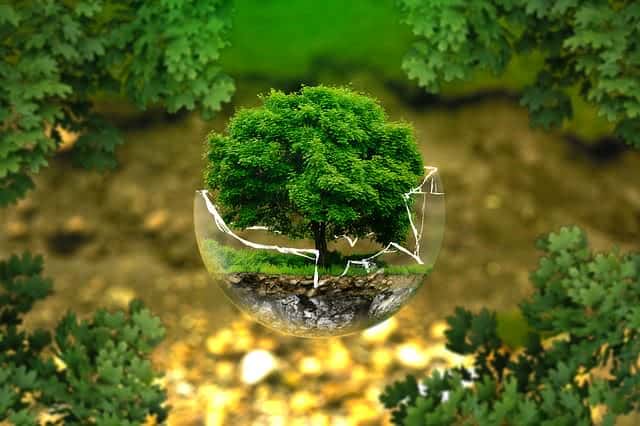Sustainability, going by the name, in clear terms refers to the ability to sustain. It is an ideology adopted to maintain an entity at the desired level. It is a phenomenon, that nowadays is used to describe the use of nature and its resources. But more importantly, it is not just a physical being. The hidden idea of sustainability is much bigger than its physical ideology. The mere presence of physical entities is because of sustainability. The proposed presence of those entities in the future would be because of sustainability. Therefore, the idea of the existence of any priceless commodity is by virtue of sustainability.
Talking in general sense, sustainability is often referred to in ecological senses. The scarcity of nature and its resources, and need to prevail them for generations to come; has given birth to the idea of sustainability. As the Brundtland commission also says, sustainability is optimum use of resources by the present generation and simultaneously saving them for future generations too. The natural resources are depleting at a very fast rate, and if this continues, the future generations won’t be left with any of them. The earth has enough for everyone’s need, but not enough for a single man’s greed. This said so, the importance of being sensitive towards judicious use of resources becomes the need of the hour.

Related: What do you mean by Sustainable Development?
With time, the essence of sustainability has changed very drastically. It has incorporated various other fields in its large umbrella. In the modern world, the idea of sustainability revolves around various parameters. The urban lifestyle has given rise to the issues that have posted a huge question mark on the idea of sustainability. Modernization, rapid globalization, industrialization have called in natural and man-made resources to the best of their capabilities. Alongside, the world is becoming culturally and socially inhuman. The judicial and administrative systems have also started getting exhausted. The need for high economic returns and maximizing profits have called for newer and more comprehensive ways to describe sustainability. Apart from the aspect of ecological sustainability; the arenas of social, cultural, economic and political sustainability occupy the central stage. Technological sustainability is also a new term being coined by virtue of globalization. Maximum utilization with minimum wastage is the primary focus of all the above-mentioned aspects.
Throwing the light on the scenario, Sustainable Habitat is one such aspect that occupies the central stage in the global arena. Modernization, rapid globalization, industrialization have called in natural and man-made resources to the best of their capabilities. And the land, being a limited resource, affects (and is drastically affected by) the whole game. In a quest to be utilized to maximize the profits, the need for adequate living spaces cannot be undermined. This creates a problem in marking the benchmarks for the apt use of the land.
Related: Sustainable Development Goals United Nations, Millennium Development Goals
Talking in contextual terms, habitat refers to a comprehensive living space, that is not just limited to a person’s affordability of a roof over his head. It is something that the person experiences while living. His surroundings where he lives, where he works, where he spends his time of the day; all of it is his habitat. It is an ecosystem of tangible extent. The idea of Sustainable Habitat is not just limited to housing and living spaces pertaining to the ones directly engaged in the economy, but also the ones indirectly affected by it. More importantly, it takes into account the significance of biodiversity and preserving the corresponding intrinsic nature of that land so as to create quality living.

To bring about the sustainability of habitat, a multi-dimensional perspective is needed. Physical sufficiency, spatial adequacy, economic affordability, social compatibility, cultural flexibility, political stability, environmental adaptability, risk resilience, etc. are the different parameters that together make sustainable habitat. These parameters accomplish the primary goal of every individual to earn for a decent lifestyle. Adding to the above parameters, the need of a powerful judicial and administrative setup to ensure equity, safety, and security, peace, justice cannot be left behind. A functional mobility network and adequate infrastructure services act as a spine for sustainable habitat.
In Scandinavian countries, people have realized that the quality of life is imperative of its socio-economic characteristics. This has significantly reflected their overall global performance, which is quite evident from their Human Development Indices. It is quite clear that the competition that takes place on the cost of economic, environmental and social parameters does not lead us anywhere. Sustainable habitat is self-contained in itself; and is also at the same time, facilitator of economic, environmental and social sustainability. Sustainable development of habitat lets the living population bloom through opportunities, and at the same time, ensures that the future beholds clean environment, rich culture, and economic prosperity for the generations to come.
Also Read: Environmental Sustainability, Environmental Education